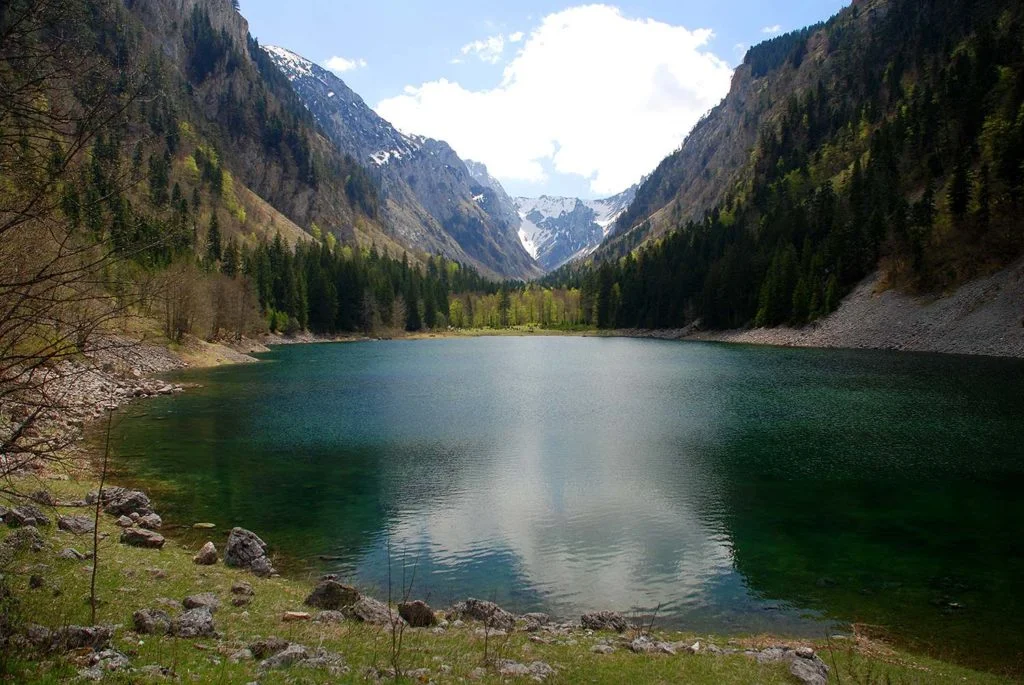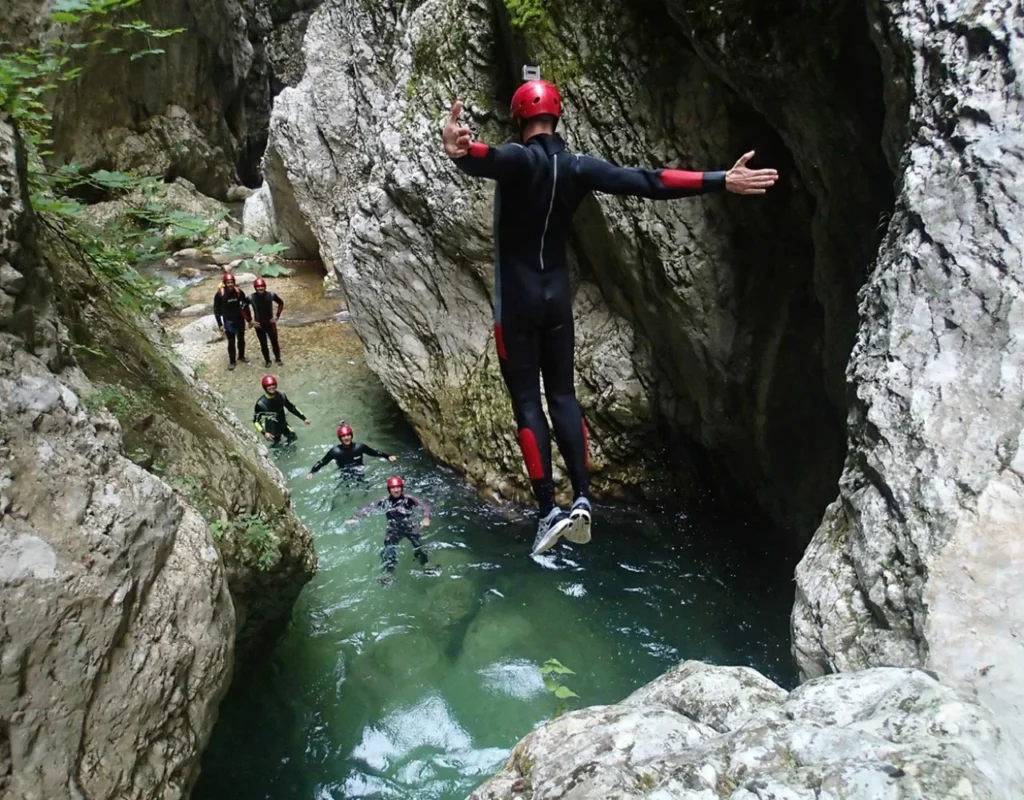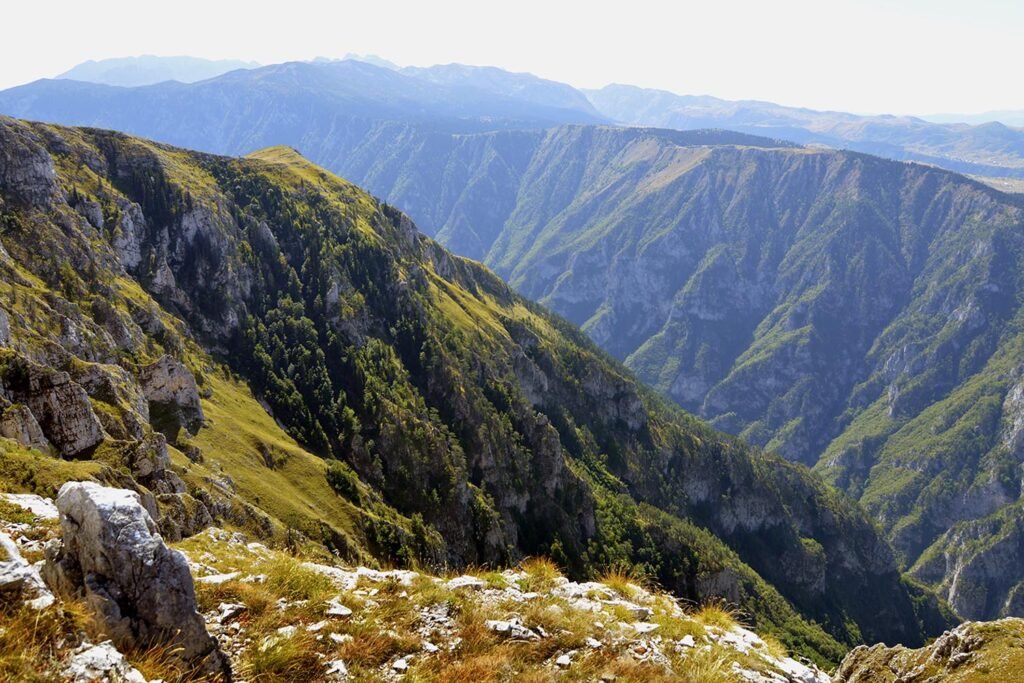Tara is the longest river in Montenegro, 144 km long. It originates below Komovo, from the rivers Opasnica and Veruša and the melting of snow and seasonal rains, and with Piva from Šćepan polje, near the border with Bosnia and Herzegovina, forms the Drina. Tara cut one of the largest canyon gorges in the world, 78 km long, with vertically steep sides over 1300 meters high, which makes the Tara Canyon the second deepest in the world (right after the Colorado Grand Canyon), but it is certainly the first in terms of beauty. Because of the crystal clear water (you can drink the entire length of the road) and the extremely rich plant and animal species, many of which are endemic, The Tara River is on the UNESCO list of protected areas. The canyon and the Tara River fulfilled as many as three conditions (of which only one was sufficient) to become part of the UNESCO World Heritage Natural Resources, namely geological phenomenon, hydrological phenomenon and biological phenomenon.
The bridge on Đurđevića Tara is the highest bridge in Europe. An exceptional building work of contemporary architecture, a symbol of the Tara river canyon.
The large concrete arch bridge was designed by one of the greatest construction experts of the Kingdom of Yugoslavia, ing. Mijat S. Trojanović. It was built in 1938/40. years. When it was completed, the Đurđevića Tara bridge was the largest road bridge made of reinforced concrete in Europe and one of several largest and most beautiful traffic structures of its kind in the world. With its strong five-arch construction, the main arch of which is 116 meters long, the magnificent bridge on Đurđevića Tara rises above a canyon more than 150 meters deep. During the Second World War, in 1942, in order to prevent enemy units from crossing into Montenegro, the partisans demolished one arch of the bridge on Đurđevića Tara. The task was performed by civil engineer Lazar Jauković, who participated in the construction of the bridge. Then the construction of the last small arched opening with a length of 44 meters was demolished, while the other parts of the bridge remained undamaged. Jauković was caught by the Italians and shot on the bridge. The people of the Durmitor area, in memory of his heroic deed, erected a monument to him near the bridge, where he was buried. After the liberation, the Bridge on Đurđevića Tara was renovated and ceremonially put into traffic in 1946.
In the hamlet of Luka, in Đurđevića Tara, about a kilometer downstream from the big bridge, there is the monastery of Saint Michael the Archangel from the 14th century. There used to be a copying school in this monastery, from where many Orthodox shrines were supplied with liturgical books. There is also the 15th-century Dožlica monastery with the Church of the Assumption of the Blessed Virgin Mary. Both monasteries have been restored and provide visitors of Durmitor and Tara Canyon with interesting spiritual experiences.
The canyon was named after the river Sušica that flows through it. It is 15 kilometers long and up to 700 meters deep. At the end of the canyon, the river flows into Tara. There is one of the deepest points in Durmitor National Park, with a height of 512 meters. In order to create such a deep cut, the joint action of tectonic forces, the force of water and the shaping of stone is necessary.
In the period between 1919 and 1939, rails were laid in the canyon, which were used to transport trees.
The trees were transported from this place to the Danube by rafts. Today, those rails cannot be seen, nor can the 11 mills that existed here. Almost all of them are gone. The remains of the stone walls of the mills can only be seen in some places.
On the plateaus on both sides of the canyon, there are two authentic villages: Nedajno and Mala Crna Gora, which "hang" as it were, on the edge of the abyss. It is interesting that these two villages, across from each other, have almost no communication. Although they "touch" visually, they are as far as 16 km from each other by road. People from Nedajne and Montenegro practically do not know each other, they are too "distant" from each other...

Komarnica is a river in the north of Montenegro known for its Nevidio canyon. It originates under Durmitor and flows through a canyon 40 km long and 600 km deep. Nevidio is also the last conquered canyon in Europe and represents a major tourist attraction and challenge for canyoning enthusiasts. It was won in 1965 by PD Javorak from Nikšić. Today, with safe equipment and trained guides, it is accessible to almost everyone with better fitness. The most inaccessible part of the canyon is 1.5 km long and up to 500 m deep. Low temperature, slippery, sharp rocks, narrow passages, darkness, landslides, labyrinths, waterfalls are just some of the obstacles encountered. One section is called "Kamikaze Gate", 500m deep, and in some places barely 20 meters wide. Once you enter the canyon, it is impossible to go back. . The entrance is located at 935 m, and the exit at 810 m above sea level.
The area around the entrance is one of the most beautiful areas in the Durmitor region. The beauty of this region is the village of Pošćenje with two glacial lakes.

Draga River is the right tributary of Tara, 11.2 km long and originates from several sources below the peaks of Ljubišnja. It flows through a narrow and wild canyon 800 m deep. It is a sinkhole and has two waterfalls along its course. At the confluence of the Draga and Tara, there is a strong spring, Turka glava, and a little lower, the spring of Kućišta.
What makes Draga particularly interesting is the fact that it is richer in water in its upper reaches than at its mouth. The lower part of the Draga river canyon is part of Durmitor National Park. Through this canyon, you can reach the Tara River and the famous Draški Virov from Jel's stump through attractive gorges.
Canyoning through the Draga River is a paradise for those who are eager for an adrenaline adventure, this area is also a paradise for alpinists, speleologists and paragliding enthusiasts, and hunting and fishing tourism can also be developed here... At the beginning of this canyon, an old river watermill still resists time. which could also be one of the tourist attractions of this region. This canyon is a kind of natural attraction and a great eco-potential of the tourist offer in Pljevlja, with opportunities for an active vacation in nature.

